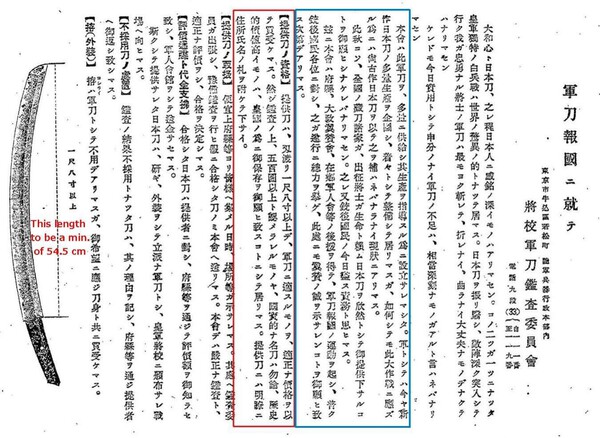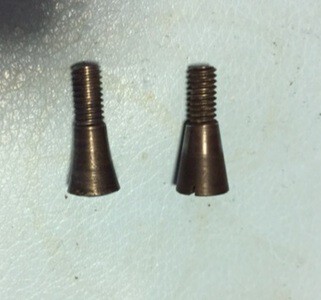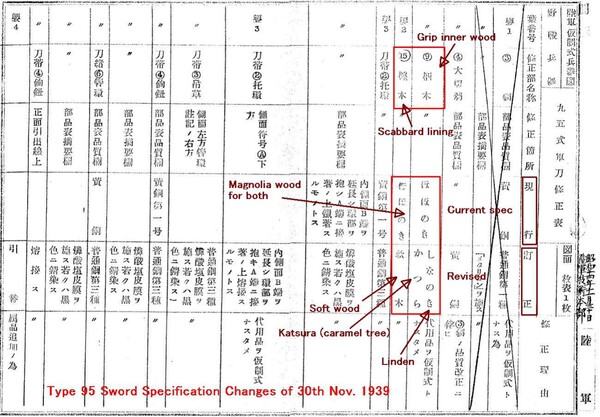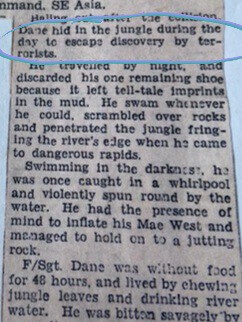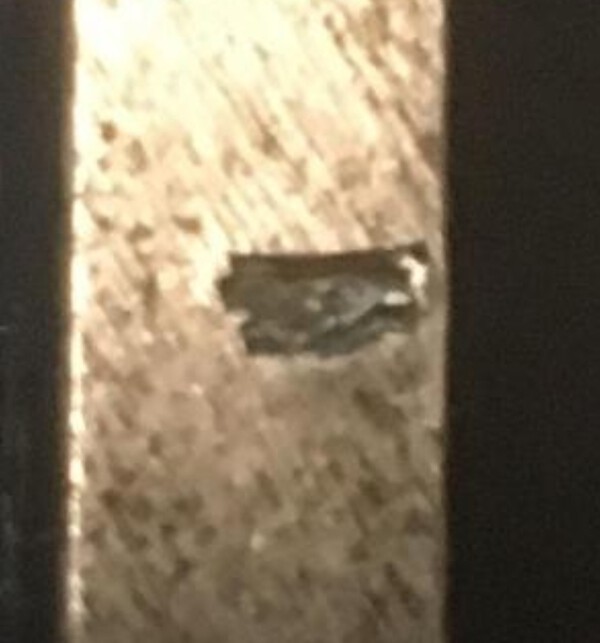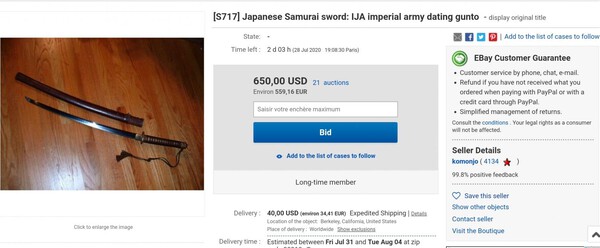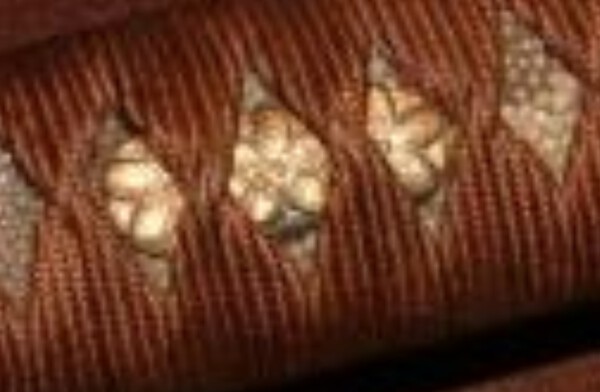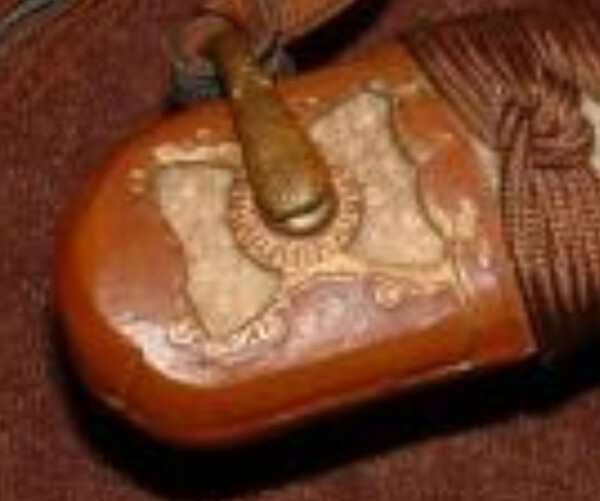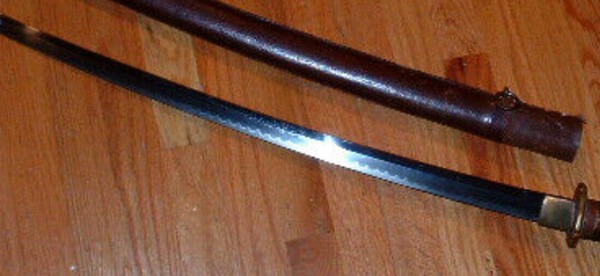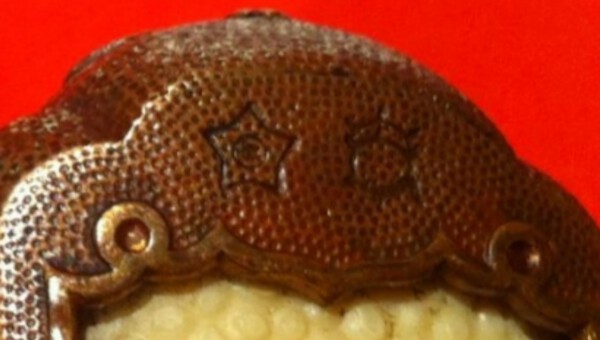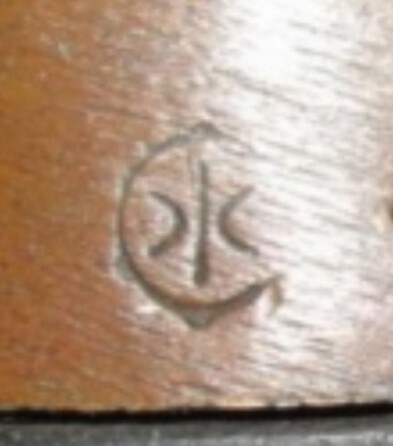-
Posts
13,032 -
Joined
-
Last visited
-
Days Won
155
Content Type
Profiles
Forums
Events
Store
Downloads
Gallery
Everything posted by Bruce Pennington
-
Mark, This model had no official title. Designed in 1938, it began production in 1940, yet almost all the one's we've seen today are '43-'45. It was enacted under a "other" category and called a Contingency sword (Rinji-seishiki). Big discussion about them here: http://www.warrelics.eu/forum/Japanese-militaria/deflating-another-myth-type-3-army-officera-s-sword-expanded-version-584796/
-
Astonishing collection. The articles are great too.
-

Star Stamped Tsutsui Kiyokane Blade
Bruce Pennington replied to cisco-san's topic in Military Swords of Japan
Sorry Chuck, I knew I was going to cause confusion when I chose those words! The screw goes in the ana closest to the tsuba. Mekugi is closest to the kabutogane. -

Star Stamped Tsutsui Kiyokane Blade
Bruce Pennington replied to cisco-san's topic in Military Swords of Japan
Ok, this is what you are seeing in my Rinji. It's an original WWII screw made for the Rinji tsuka. Mine was missing the screw, and I got one from Neil. The Bubba-bolt was on another Rinji. -

Star Stamped Tsutsui Kiyokane Blade
Bruce Pennington replied to cisco-san's topic in Military Swords of Japan
I've tried, and tried, but I can't figure out the joke, Dave. I know a snipe hunt is a joke guys play on rookies, but I'm lost with the reference, here. -

Wet, dirty Saya Liners
Bruce Pennington replied to Bruce Pennington's topic in Military Swords of Japan
While reading some of Nick's posts on the Type 95, I came across this: "Back in November 1939, because of the China Incident, they had to set up B-spec materials for making the swords and at that time the scabbard liner and grip inner wood material specs were expanded to include other species. Before, only magnolia was accepted, but Katsura (Caramel Tree) and Japanese Linden (Tilia japonica) were added as acceptable substitutes at that time. Shown below is the full spreadsheet for those changes which I omitted earlier, when I touched upon the changes briefly." found here: http://www.warrelics.eu/forum/Japanese-militaria/short-development-history-type-95-gunto-676112-3/ -
All you Nihonto pro's forgive me, but I see a suguha running underneath the artificial hamon. But I could be totally out-to-lunch!
-
Thanks Kiipu! I understand now. Back then, I simply thought you were saying the blade required a special inspector's approval. I had no idea the kanji litterally meant "special". It reminds me of the early years when I read Ohmura's description of Mantetsu serial numbers using the iroha system. I didn't know what he meant, so it went right by me. I've updated the Stamps Doc to reflect this, thank you!
-

The Mysterious "w" Stamp!
Bruce Pennington replied to Bruce Pennington's topic in Military Swords of Japan
Thanks John! I know that Mantetsu wasn't the only blade producer that used the zodiacal dating system, but I just had to check on yours! It is an unusual place for the koshirae fitters to put a number. I've saved it for my records. Thanks again! -
Kiipu, My thread has been sidetracked from the beginning. I am not searching for the meaning of the Sho, Seki, and Gifu stamps, nor even their history. I am trying to gather confirmed, dated blades with these stamps to document the windows of years each was used. Without dated blades, all we have is the word of a guy, who is quoting an author, who asked a surviving swordsmith. With hard data/evidence, we can either confirm the stories, or discover something new they didn't know.
-
Important dates of Type 94 implementation and the confusion it caused concerning the Dress sword, by Nick Komiya at Warrelics: http://www.warrelics.eu/forum/Japanese-militaria/why-did-army-revive-samurai-sword-design-1934-officers-770851/ Within it, he links to an earlier discussion revealing the reasons for abandoning the kyu-gunto and reviving the samurai sword design.
-

Attention Mantetsu Owners: A Survey
Bruce Pennington replied to Bruce Pennington's topic in Military Swords of Japan
Just got a reply back: "Hi Bruce, The photos of the blade I have in the listing shows all, no date, no serial number. I don't think this is a genuine Mantetsu blade. I've never seen a Mantetsu blade with hamon other than suguha, never notare or gunome like this one. Also, the nakago and markings look too "fresh," and the "Nan" stamp looks rather hand-carved than machine stamped. I think someone took a mumei katana, and turned it into a Mantetsu blade. Regards, Mike" -

Attention Mantetsu Owners: A Survey
Bruce Pennington replied to Bruce Pennington's topic in Military Swords of Japan
I had a brief conversation with him once, and he says he sells his stuff on commission from suppliers in Japan. So, it's possible there is a mix of stuff they are sending him. These fake Mantetsu likely originate from mumei gendaito (or shingunto) and someone is faking the Mantetsu mei to crank up the price. Some things never change!!! This is the first one with clearly fake fittings, that I've seen. -
The chain is from the original sword-belt. It would have had a hook to suspend the sword from the ring on the saya (scabbard). The all-brown tassel is now known to have been used by the Gunzoku, civil branch of the army. They wore uniforms, but had distinctive ranks for the civil side (sort of like our GS & WG workers on bases, but with uniforms). It's a lighter brown than the navy tassel. It would be great to see a focused close-up of the blade tip. Seems the original hamon is more visable there. I've enlarged the one from above: The style is called the Type 98 Japanese officer gunto. You can read about them, with great pictures, on Ohmura's site, here: http://ohmura-study.net/934.html
-
Yes, $800-1,200, depending upon your buyers budget. It's interesting in the article, they say he was evading "terrorists". Didn't know they were using that term in WWII, and wonder what they meant by it? Locals who were anti-Allies?
-
"Well isn't THAT special!" Ha! What a unique thing to stamp on a blade. It was on a star-stamped RJT blade, after all, but his is the only one I've seen with this stamp. Thanks again!
-
Thanks George! Another mystery, because now we wonder "Especially important" order for important person, or especially important work because of the quality of the work? As these are inspector marks, I would guess the latter. You don't happen to recognize that last mark do you?
-

"Weed Whacker" Katana Translation help?
Bruce Pennington replied to JeffreyM's topic in Translation Assistance
I agree with Chris. We can only tell you what current market rates are for the average war sword. This one looks like it was made in the late '30s for a civilian purchase, using non-traditional methods. So, on average these run $800-1,000 right now (market has fallen with the COVID plague). That could change if you get it to a professional who can really evaluate this for you, and he says it's something older, but unless it's a famous smith, it won't increase the value much more that $500 or so. -

Attention Mantetsu Owners: A Survey
Bruce Pennington replied to Bruce Pennington's topic in Military Swords of Japan
Thanks Bruno! I've messaged Komonjo and asked for pics of the mei, date, and serial number. I have 2 of his previous ones, both with wavy hamon, and both with accuarately marked katakana for the year (Ka). The two serial numbers are 228 and 232. We'll see if the pattern continues. I'm posting the pictures below for the future when the fleabay link goes inactive. the fittings are crude/fake and the ito is new His Mantetsu hamon are always wavy -
While it's cetainly possible, my gut feel is that it is the Tokyo 1st Army Arsenal star. The one to the right is still "unknown" but strikes me as quite similar to the Mizuno emblem found on some Type 95s. We know Mizuno only made 95s for a short time, and lost the contract, but could have been making koshirae.
-
Neil (IJASWORDS) owns an RJT gendaito with "特" TOKU stamped on the mune. Does anyone know the signifigance of the term? Why would an inspector have a stamp that says "Toku"?



